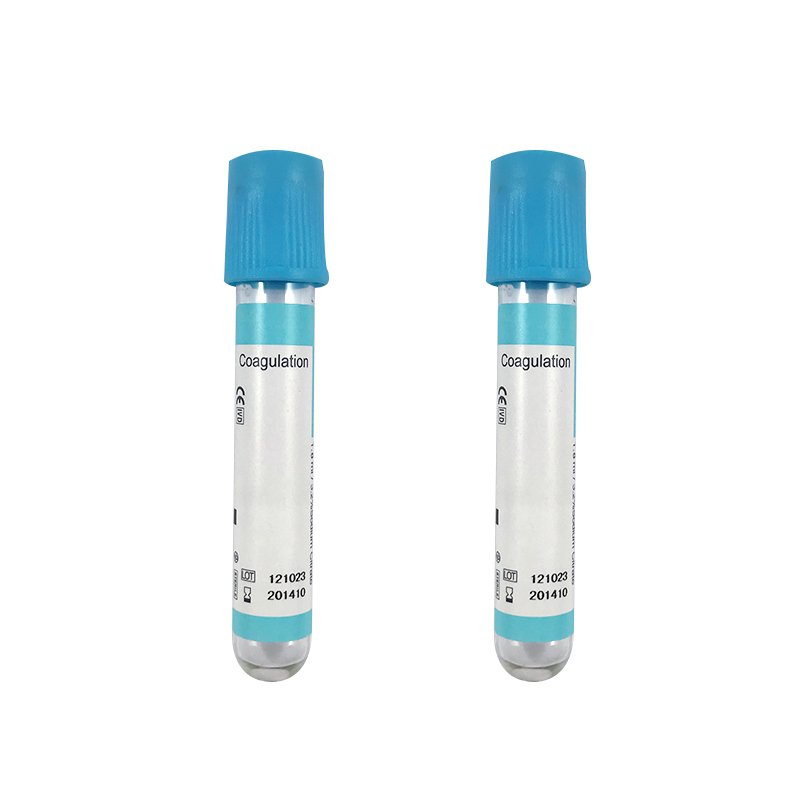A vacuum blood collection tube is a kind of vacuum negative pressure blood collection tube, which is usually seen when blood is drawn during physical examination. I believe many people have found that vacuum blood collection tube has a variety of headcovers. What do different headcovers represent? What’s the difference? Using a vacuum blood collection tube to collect blood, generally, one end of the bidirectional needle is inserted into the vein with the help of the needle holder, and the other end is inserted into the vacuum test tube, and the blood automatically flows into the test tube under negative pressure. Because the whole process of blood collection is completely closed, the pollution caused by blood overflow is avoided, and it is conducive to the transfer and preservation of samples, which is widely used at present. The color of the headcover and label used in the standard vacuum blood collection tube is mainly used to show the types of additives in the blood collection tube and the test purpose, which is convenient for medical staff to select the corresponding blood holding tube according to their needs.
- Red head cover

The red skull cap is a common serum tube, and the blood collection tube contains no additives, which is mainly used for routine serum biochemistry, blood bank, and serological related tests.
- Orange cranium

The orange-red skull cap is a rapid serum tube with coagulant in it, which can activate fibrin and turn soluble fibrin into insoluble fibrin polymer, thus forming a stable fibrin clot. The rapid serum tube can coagulate the collected blood within 5 minutes, which is suitable for emergency serum biochemical tests.
- Green head cover

The tube is filled with heparin, which is a heparin anticoagulation tube. Because heparin has a direct antithrombin effect, it can prolong the coagulation time of samples. Therefore, the heparin anticoagulation tube is suitable for the erythrocyte fragility test, blood gas analysis, hematocrit test, erythrocyte sedimentation rate, and general biochemical determination. However, it is not suitable for the hemagglutination tests, and excessive heparin can also cause leukocyte aggregation, which can not be used for leukocyte counting or leukocyte classification.
- Golden head cover

It is an inert separation gel coagulant tube with inert separation gel and coagulant. After blood collection, the specimen is centrifuged in a centrifuge, and the inert separation gel in the tube can completely separate the liquid components and solid components in the blood and completely accumulate in the center of the test tube to form a barrier so that the specimen can remain stable within 48 hours. The coagulant can quickly activate the coagulation mechanism and accelerate the coagulation process, which is suitable for emergency serum biochemical tests.
- Light green head cover

The light headcover is the plasma separation tube. Adding heparin lithium anticoagulant on the basis of inert separation hose can achieve the purpose of rapid separation of plasma, which is the best choice for electrolyte detection, and can also be used for routine plasma biochemical detection and emergency plasma biochemical detection such as ICU.
- Purple head cover

The purple skull cap is an EDTA anticoagulation tube, EDTA and its salts can effectively chelate calcium ions in blood samples. Chelating calcium or removing calcium from the reaction site will block and stop the endogenous or exogenous coagulation process, thus preventing blood samples from coagulating. It is suitable for general hematology test, not for coagulation test and platelet function test, nor for the determination and PCR test of calcium ion, potassium ion, sodium ion, iron ion, alkaline phosphatase, creatine kinase, and leucine aminopeptidase.
- Light blue head cover

The shallow blue cap is the sodium citrate coagulation test tube. Sodium citrate plays an anticoagulant role mainly by chelation with calcium ions in blood samples. Suitable for coagulation experiments, the ratio of anticoagulant to blood is 1: 9.
- Black head cover

The black headcover is a sodium citrate erythrocyte sedimentation rate test tube. The concentration of sodium citrate required by the erythrocyte sedimentation rate test is 3.2% (equivalent to 0.109 mol /L), and the ratio of anticoagulant to blood is 1: 4.





